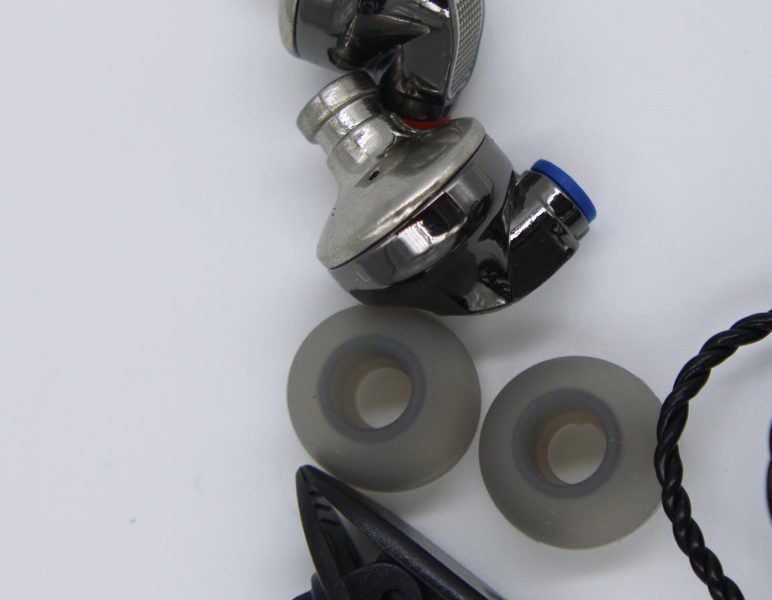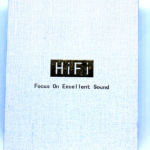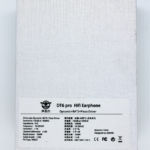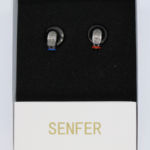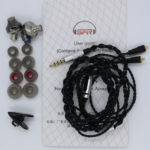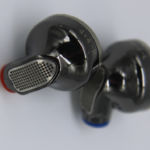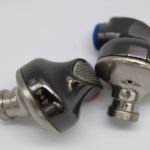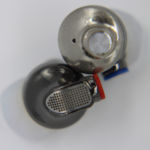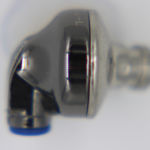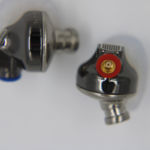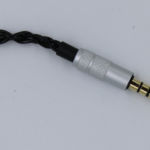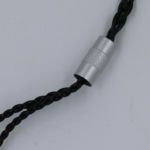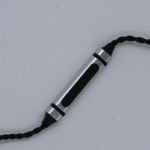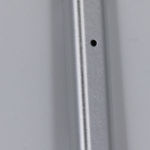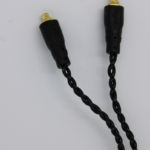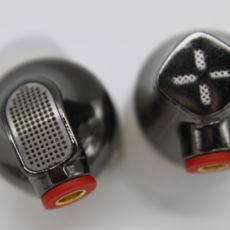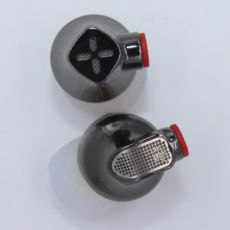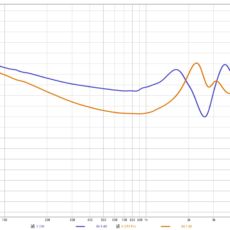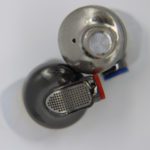Senfer DT6 Pro
I purchased the DT6 Pro at retail cost because I had enjoyed the DT6 and wanted to see how the Pro compared. I have no financial interest in Senfer, nor do I feel a need to disclose which vendor it was purchased through as the DT6Pro is widely available at roughly the same price point from Aliexpress.
Unboxing / Packaging:
The DT6 Pro came in an understated white lift top box which oddly makes no mention of Senfer anywhere on it other than a small logo and the words “designed by Senfer” in small print on the label on the rear of the box. The front says only Hifi and focus on excellent sound with no indication of the product inside. The rear does have a label added with specs in English and Chinese. Inside the box, the tips rest in a foam surround with the remainder of the items in a small box above it that is emblazoned with Senfer in gold. The kit consists of earpieces, cable, shirt clip, 3 silicone tip sizes, and the warranty card. Gone are the Devo hat style tips from the original model (thankfully).
Build/Fit:
Build is very similar to the original with a 3 part shell joined at the widest point. The front shell is a press-fit into the rear with a single vent hole near the center and the nozzle offset to the leading edge with a distinct forward rake. Nozzles are slightly larger than the original as is the vent hole but the two are certainly variations on the same design. The rear of the Pro shows larger changes as the shell is shallower and more gracefully sloped than its predecessor and uses a large stamped metal grill for a vent instead of the milled slots in the original. One small machining difference was visible as the left earpiecs has a small tab at the bottom of the grill while the right side is flush. Left and right are easily identifiable by the colored rings around the mmcx connectors and the cable has matching right and left indicators on the mmcx housings.
Internals:
The original DT6 was one of the early Piezo-hybrids on the market and combined a 12mm dynamic, a 7mm (squared) piezo, and a single 30042 balanced armature to round out the package. The Pro steps that up to a 12.5mm dynamic, maintains the 7mm Piezo, and adds dual balanced armatures at the top end. No detail on which BA is used in the pro is provided by Senfer so although it is possible that it uses dual 30042 drivers, it is perhaps more likely to be 30095s as they are much more frequently seen paired. The Pro has a nominal impedance of 16Ω with a listed sensitivity of 1o5dB/mW . This would suggest the DT6Pro should be fairly easy to drive, and it is as it worked well from both phone and tablet. It does scale some with more potent sources but this seems more qualitative than quantitative as the piezo is capable of delivering micro-detail if provided with an adequate input.
Cable:
The cable I received is the with Mic version and appears to have changed very little from the DT6 as when put side by side they are near an exact match. Senfer lists the cable as silver plated copper in their documentation. With the black sheathing, and brushed aluminum fixtures, the cable is well matched to the earpieces. The jack is of the straight variety with a brushed aluminum housing with knurling on the upper portion. The splitter is matching with knurling around the center portion. No chin slider is provided and the large mic/ remote would obstruct it anyway so that is just as well. The mic well positioned at about chin height and features a 3 button remote opposite the mic port. The north end of the cable terminates in mmcx connectors in black plastic housings. If there is one complaint on the cable, the strain relief on the jack is minimal and none exists at the lower side of the splitter. This may ultimately make the cable less durable than some others.
Issue:
I did experience one issue with the DT6 Pro. When I first started listening, I noticed it was causing my left ear to itch and I periodically had to remove the earpiece and scratch. I later noticed during a period of wearing them with music stopped that the irritation quit. When I hit play it began again so I very unscientifically touched the inner shell to my tongue with music playing and sure enough, it felt as if I had stuck my tongue to a 9Volt battery. I found a quick coat of clear nail polish on the inner shell insulated it enough to prevent this and further listening was unmarred, but this is a definite QC issue as the shell should never be used as the ground for an in-ear. I decided to dissect the shell and see what was causing it. It appears that the frame of the piezo element is used as its return lead and that same frame is in contact with the shell which allows a path for electrical current to flow to the shell. Coating the inner shell with an insulator would be well advised for the next revision.
Sound:
Bass:
Sub-bass has good rumble and is a bit emphasized compared to the mid-bass which drops back considerably from the sub-bass push. The Sub-bass push centers on about 50Hz with roll-off becoming evident below about 35Hz. Mid-bass takes a back seat to both sub-bass and mids/treble comparatively with a V-shape with an offset of the trough to the left so that the upper-midbass becomes part of the trough along with the lower mids. These still manage to deliver good bass presence when called for, but do not accentuate it the bulk of the time. Speed is good with slightly slower decay than attack which leaves a little warmth and gives the lower end a bit of weight. Texture is about as expected for this class and while not exceptional is certainly adequate and doesn’t sound overly loose or sloppy.
Mids:
Lower mids share the trough of the mid-bass and are a bit recessed compared to the upper-mids which begin to climb at about the 1kHz mark and plateau by the 2kHz range at a point roughly equal to the sub-bass emphasis. Upper-mid emphasis does give vocals a bit more of a push forward in the mix, but when combined with the lower recess can make male vocals sound a bit behind their female counterparts. Guitar growl is good as the piezo produces good textural detail, but again they lack a bit of weight in the mix.
Treble:
Lower treble is forward, but equal to upper-mids with good detail and texture. Snare has a nice rattle, and cymbals sound more realistic than expected without that metallic edge so common in budget hybrids. The tuning is more even than its parent with no big dips or spikes until we get above the 6kHz mark where it drops back considerably. There is still a spike at 10kHz that both adds some air at the top end, but can contribute to some fatigue as well. Roll-off has moved upward to the 14kHz range rather than rolling off immediately above the spike as the previous model did, and generally gives a sense of more air and better sparkle at the top end. Make no mistake, the DT6 Pro is a bright IEM, but perhaps not as much so as one might expect with multiple treble elements in play. Still for the treble shy, be aware and audition before buying.
Soundstage / Imaging:
Soundstage is bit wider than deep and is a bit larger than its predecessor so gives a bit less intimate staging, more like a small hall than a single room. Instrument separation is good unless the passages get extremely complex and then some overlap can be heard. Seating the orchestra was fairly straight forward although the stage depth does seem a bit shallow with some instruments feeling more beside each other than a front/back relationship. Imaging is quite good for the price point and layering was better the previous model. I went back and listened to Baba O’ Riley again since I had used it with the DT6 and found the shifting intro equally well rendered with movement around the stage being clear and easily tracked.
Comparison:
Well the obvious question is how does the Pro compare to the original, and is it markedly better.
Starting with the build, the two are very similar in size and shape with the pro sporting an removable stamped grill compared to the machined slots in the rear of the original shell. This results in a larger rear vent on the pro, but seems more of a cost saving measure than an upgrade as the original is more aesthetically pleasing (at least to my eye). Inner shells are even more similar as without measuring them, they appear to be interchangeable between old and new. Cables appear unchanged as well.
Sound wise, they do sport more difference as the measurements show. Mid-bass is bigger on the original and lower-mids are not as recessed compared to the pro. This gives the pro a more sub-bass heavy sound comparatively and the original a bit more lower-mid presence. Mids are a mixed bag as the original has more lower mids but falls off in the upper mids while the Pro has a bit less lower-mid but climbs as you reach the upper mids and delivers a more vocal oriented signature as a result. The upper-mids and lower treble are more linear on the pro then on the original as they don’t have the valley at 3kHz that detracted some from the lower treble on the original. Above about 5kHz, the two again seem very similar with a drop off around 6kHz, and a spike in the 10kHz range before rolling off above it. The Pro does have a bit more top end extension comparatively as is expected with dual ba drivers handling the north end with roll-off being near 12kHz on the original and closer to 14kHz on the Pro.
Thoughts / Conclusion:
I really liked the original DT6 as I thought it brought a level of detail rarely seen in the $20 price range and while it suffered from the 10kHz spike, its signature balanced well and gave the mids more presence than most of the other offerings in its class. It wasn’t the classic deep V shape which set it apart from the KZs that dominate that price point. I am somewhat disappointed that the pro moves back toward that V shaped signature, but at the same time, it does show some positive changes too. Details are improved, especially at the top end, mid-bass is a little cleaner and better composed, vocals are a bit more forward in the mix, and top-end extension is improved. On the downside, lower-mids take a bit of a hit which is regrettable. Also, I cannot overlook the fact that either an assembly flaw or a design flaw left me literally scratching my ear due to the shell acting as a chassis ground. While easily fixed, end users shouldn’t need to do so. Overall, I think the DT6 Pro sounds very good for a $22 in-ear and were it not for the mechanical issues, it would earn a recommendation.
-
Bass - 7.5/107.5/10
-
Mids - 6/106/10
-
Treble - 8/108/10
-
Soundstage - 6/106/10
-
Imaging - 7/107/10
Summary
Pros: Improved upper-mids/lower treble compared to original, better extension, improved detail
Cons: QC issue, more V shaped than original, average cable.

